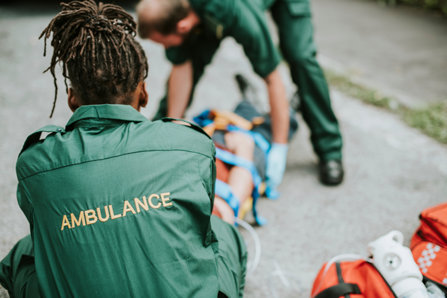New Report Suggests “Safe” Injection Sites Actually Increase Crime

A “safe” injection site (SIS) is the invention of groups and individuals dedicated to what they call “harm reduction.” This site is a facility staffed by medical personnel where addicted people can go to inject drugs. In most cases, the drug being injected is an opioid such as heroin or fentanyl (knowingly or unknowingly).
The basic assumption is that people are going to use drugs so the best thing you can do is to reduce the harm associated with the drug use. These injection sites were created in Europe and in Canada as a method of reducing this harm.
If the drug user overdoses or has another medical problem while they are in the facility, the staff are there to help them. Sterile injecting supplies like water, syringes and other needs are provided. One of the stated purposes of these facilities is to refer drug users to detoxification services so they can start on the path to recovery. Users are also referred to nursing services, psycho-social support or other sources of help.
But do their services actually result in help? Community meetings on the topic have had vocal advocates on both sides of the issue. Some people vigorously oppose these sites and others see them as beneficial. Finally, a new report sheds some light on the subject.
Canada’s Experience with SIS
These sites have existed in Canada since 2003. Vancouver’s Eastside, an area of heavy drug use, was the location of the first such location, a facility called Insite. This facility is still operating. According to the Governing.com website, a total of 25 of these sites are scattered across Canada, with several in Edmonton.
From time to time, reports have been issued about the positive effects these facilities seemed to be having. One such report reviewing the results both from Canadian and European centers claims the following results of the presence of these facilities:
- Injecting drug users (IDU) say they feel safer using their drugs in the SIS.
- The majority of clients sought health services with the help of SIS staff.
- Many users received helpful advice from the staff on how to inject safely.
- There were fewer public injections and discarded needles because of the SIS.
- The number of overdoses and calls for ambulances went down in the areas of the SIS.
- Crime did not increase in the vicinity of the SIS.
- The facilities have been effective in saving many lives.
These results have been repeated any time there was a controversy about SIS. But are they true and honest? Let’s look at this new report.
Report on Alberta Safe Injecting Sites by Alberta Health
This new report was published in March 2020 and looked into the results of seven of these facilities in this province: Four in Edmonton, plus one each in Calgary, Lethbridge and Grande Prairie. Most of these sites had been open for at least a year at the time of this new evaluation.
In this report, these sites are referred to as Supervised Consumption Sites or SCS.

The picture painted by this report was dramatically different than analyses issued by other groups. Here are some of the most important points included in the report:
- While there were no overdose deaths AT the SCS, the number of drug-related deaths in their immediate vicinity increased after the sites were opened.
- There were many instances of minor adverse effects of drug use being reported as “overdoses” that had to be dealt with by the staff, even if all that was needed was administration of oxygen, giving the impression that the SCS had prevented more deaths than it actually had.
- Comparatively few cases needed to be given the opioid antidote naloxone.
- As the centers operated, there began to be more incidence of methamphetamine use in the SCS, resulting in more people in the neighborhood reporting problems with aggressive or erratic behavior by users leaving the facilities.
- Except for Edmonton centers, requests for police assistance to deal with problems and crime increased in the vicinity of the SCS.
- There was some evidence of “de-policing” or lack of police response to drug-related problems in the area.
- There were substantial issues with discarded needles and other drug paraphernalia in the vicinities.
- Record-keeping at the facilities was inconsistent.
- Standardized definitions of vitally important concepts like “what is an overdose?” were missing.
- There was a lack of focus on trying to get drug users to start detoxification services and when they were recommended, there was no evidence of any followup.
- There were signs of highly questionable practices by some staff, such as using 40 naloxone antidote kits on a single individual.
- There were also reports that some non-injecting users had been introduced to injecting by staff.
- Facility statistics were not always accurately represented.
In an interesting and important development, this report validates and supports an earlier study by Tom May and his colleagues published in September 2018. This study was later retracted after heavy pressure was applied by lobbyists. According to a news report by Drug-Free America Foundation, Inc.: “In an almost unprecedented fashion, May and colleagues’’study was later retracted, no doubt in response to mounting pressure from a powerful pro-drug lobby that counts many influential academics among its ranks. With the release of this latest report from the provincial government of Alberta, the truth can no longer be denied nor suppressed.”
Empathy is Good, Effectiveness is Better
Those who can’t stop using drugs deserve help, support and empathy, definitely. But if that support stops at simply giving them a safe room in which to inject drugs, that help may actually be a betrayal.
No one wants to be an addict, no matter what they say. This is my experience after talking to many formerly addicted people and my work in a drug rehabilitation center. Every single person wants the chance to finally get sober, if they can find a way to make it happen. Because of the numbing effects of drug use, they may not feel recovery is possible or they may not feel they deserve any help.
Help for those who are trapped in addiction might start with preventing overdose deaths or injury but it should end with giving each person a healthy and sober future. It’s a continuum of care that each person should be encouraged along as expediently as possible. And then that, truly, would be help and support.
Sources:
- https://www.narconon.org/drug-abuse/signs-symptoms-heroin-use.html
- https://www.ohtn.on.ca/Pages/Knowledge-Exchange/Rapid-Responses/Documents/RR83-Supervised-Injection-Effectiveness.pdf
- https://whyy.org/npr_story_post/whats-next-safe-injection-sites-philadelphia/
- https://open.alberta.ca/dataset/dfd35cf7-9955-4d6b-a9c6-60d353ea87c3/resource/11815009-5243-4fe4-8884-11ffa1123631/download/health-socio-economic-review-supervised-consumption-sites.pdf
- https://www.narconon.org/drug-information/methamphetamine/
- https://www.governing.com/topics/health-human-services/gov-supervised-injection-site.html
- https://www.ohtn.on.ca/Pages/Knowledge-Exchange/Rapid-Responses/Documents/RR83-Supervised-Injection-Effectiveness.pdf
- https://www.dfaf.org/canadian-provincial-government-releases-scathing-report-on-supervised-consumption-sites/


 ®
®